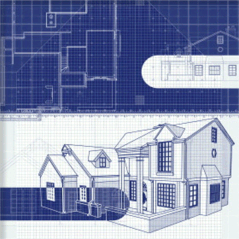Make Sure Your Association Has Them!

Community associations maintain control over the common elements and exterior appearance of the units and buildings for various reasons. Most common interest communities are built with a "theme" concept that if compromised, reduces the value of the units. Well thought out and consistently enforced architectural requirements and rules help maintain uniformity, which in turn helps support the highest market values of the units.
Another important reason to maintain control is to assure consistency and quality of maintenance, repairs, and unit modifications. Without association mandated requirements and rules, this control would be lost. Requiring adherence to uniformity standards does not mean that changes can't be made. Instead, for commonly requested unit owner projects, the association should establish standards and specifications that include durability, color, style, make and model so that all such changes are uniform.
Some unit owner requests for modifications have the potential to cause problems in the common areas like heat, noise, leaking in the roofs and walls, etc. The Association should think through each new modification carefully as to both the curb appeal and future maintenance issues.
Establishing architectural policies (or rules) to address issues related to the appearance of lots and the exterior of units goes a long way in preventing future problems. A well-crafted architectural policy will:
- Create a system for the review process that works
- Clarify the governing documents regarding architectural alterations issues
- Show the owners exactly what is expected of them in the architectural alteration process
- Act as a guide for the committee to follow in the review process
- Help satisfy due process requirements of the HOA
- The policy is the most important step in the development of an architectural design review process. It will serve to assist the Members in designing their proposed project, guide them through the architectural review process, and provide guidance for consistent review by the committee and future review committees. This is a communication tool to the Members as well. The policy should clarify and explain:
- the basis in the governing documents for architectural review
- the objectives of architectural review
- projects that require architectural review and approval
- how the Architectural Committee is created, empowered, and staffed
- what are the architectural review procedures and how they work
- what are the specific project criteria and standards needed for design approval
- specifications and specific design practices that will assist Members when applying for approval of projects
What does all of this mean in developing and implementing such a policy? Generally, the state statutes as well as the governing documents offer substantial guidance regarding the authority of the Board of Directors to adopt rules and the need to control modifications to units and common elements. These documents also speak to the rights and responsibilities of both the association and the unit owners with regard to architectural modifications. Consider that in the Bylaws and/or CC&R's, there is usually specific language detailing the authority of the Association:
Bylaws - Powers and Duties of the Board of Directors, which state: The Board of Directors has all of the powers of a Board of Directors of a corporation, subject only to those limitations set forth in the Articles of Incorporation, these Bylaws, and the Declaration. The Board has the power to do any and all lawful acts which may be necessary or incidental to the exercise of any of the express powers of the Association.
CC&R's - The Board of Directors, from time to time and subject to the provisions of this Declaration may adopt, amend and repeal rules and regulations. The Rules and Regulations shall have the same force and effect and shall be enforceable in the same manner as provisions of this Declaration.
CC&R's, Improvements and Alterations:
(a) Any Unit Owner may make non-structural additions, alterations and improvements within his/her Unit that do not affect the Common Elements, without the prior written approval of the Board of Directors
(b) The Board shall adopt, and may from time to time amend, supplement and repeal the Design Guidelines. The Design Guidelines shall set forth procedures for architectural design, landscaping design, requirements concerning exterior color schemes and appearance.
Prior to the first homeowner moving in to the association, the Board should create and adopt a living document that establishes an architectural policy for the community. In doing so, it will assure both harmony and conformity in the appearance of the development - - both now and long into the future.
Related Articles
- What is an HOA or Homeowner Association?
- How to Start a Neighborhood Association
- HOA Website Can Save Money And Increase Communication
- How Neighborhood Assoc Websites Can Increase Participation
- A Condo Association Website Can Facilitate Communication
- Neighborhood Watch-How to Start One!
- Utilizing a Neighborhood Watch Website
- An Effective Meeting Agenda
- Funding a Reserve Study
- HOA Maintenance - Who Has Responsibility for What?
- Budget Preparation Tips
- Directory of Association Articles
 Print
Print Email
Email







